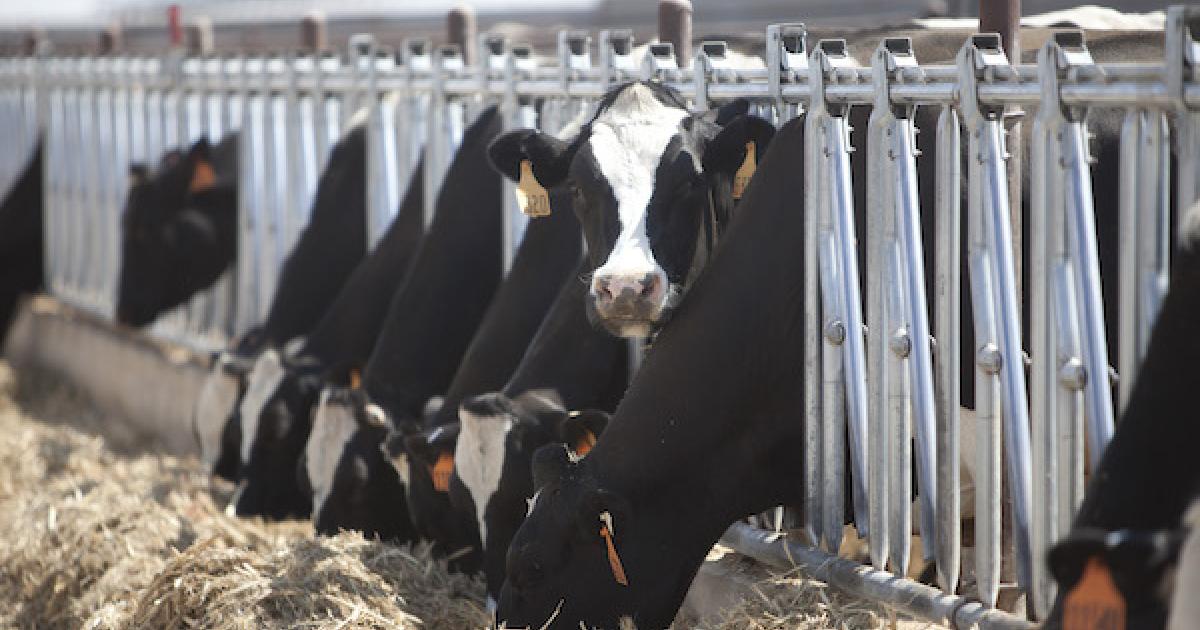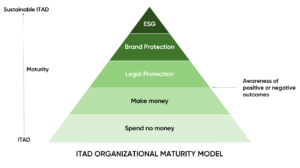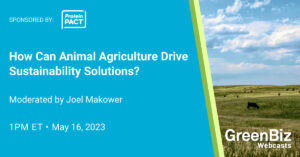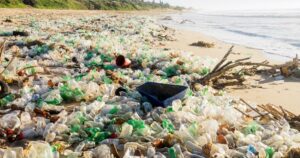
This article is sponsored by Dairy Management Inc.
On March 2, some 300 miles above Earth, high resolution satellites detected methane emissions coming from feedlots in California’s San Joaquin Valley. It marked the first time livestock emissions could be measured from space. Environmental data firm @GHGSAT was able to pinpoint five emissions ranging from 361 to 668 kilograms per hour, which, if continued at that rate for a year, would equal some 5,116 metric tons of methane gas released to the atmosphere.
Dairy farmers know enteric methane, defined as the methane emitted by silently burping cows, is one of the biggest, most complex sustainability issues for the dairy industry to address. After all, it’s part of the animal’s natural digestive process. To further complicate matters, there is no single solution, but rather a collection of interventions that address different aspects of the methane challenge.
There are, for example, promising mitigation options, currently at different stages of development.
Feed additives based on naturally occurring crops, such as seaweed, yucca and flaxseed, that are in earlier stages of research and development show potential to cut enteric emissions anywhere from less than 15 percent up to more than 25 percent, according to a comprehensive review.
Another feed additive, under safety review by the U.S. Food and Drug Administration, could reduce methane emissions by 30 percent.
And selective breeding, where dairy farmers raise cows based on their ability to produce less methane (and the most nutritious milk per unit of methane emitted), could exponentially reduce methane emissions with each successive generation.
Advances such as these don’t happen overnight, so while current research results are encouraging, continued commitments to enteric mitigation research within agriculture are critical.
A great example is The Greener Cattle Initiative (GCI), a global five-year initiative to support research and ultimately provide dairy and beef producers with effective, scalable and commercially feasible options to mitigate enteric methane. GCI is tapping some of the best scientific and agricultural minds in the world to innovate in areas such as cow nutrition, breeding and artificial intelligence that monitors methane emissions or related physiological factors. Such research supports the U.S. dairy industry’s ambitions by defining new mitigation options and collecting evidence to support their use.
As part of the industry’s work in the feed additive space, we also keep abreast of new and existing developments and trends. For instance, there has been a lot of buzz surrounding an additive called 3-nitrooxypropanol (3-NOP) and its ability to reduce emissions. Alexander Hristov, a distinguished professor of dairy nutrition in the department of animal science at Penn State University, conducted in-depth research on 3-NOP. His team found it could cut methane emissions by as much as 30 percent, which helped the product earn approval in the European Union and some South American countries.
In the U.S., the Food and Drug Administration classifies 3-NOP as a drug, which requires an extensive review on safety before this additive can be approved for use by U.S. dairy farmers.
Once these technologies have scientific evidence supporting their use and are registered, there are new challenges around maximizing the benefits of these technologies, such as accurately measuring reductions and adoption at scale.
Beyond, it’s critical that the reduction opportunities make good economic sense. Options such as carbon offset markets and government programs are steps in the right direction and ultimately will support farmers in executing both near- and longer-term solutions as quickly as possible.
Ultimately, this is all good news. It means solutions to reduce enteric methane emissions exist. It means dramatically reducing methane emissions is possible. It means the dairy industry is playing an important role in helping to reverse the climate crisis and address the sustainable nutrition challenge — that is, the dual need to ensure food security and nutrition for a growing population while reducing environmental impacts.
And for dairy, it means that innovation is a solution in and of itself.
#dairy #methane #GHGemissions
- SEO Powered Content & PR Distribution. Get Amplified Today.
- Platoblockchain. Web3 Metaverse Intelligence. Knowledge Amplified. Access Here.
- Source: https://www.greenbiz.com/article/unlocking-dairy-cows-potential-combat-climate-change
- 116
- a
- ability
- Able
- above
- According
- accurately
- additives
- address
- administration
- Adoption
- After
- Agricultural
- agriculture
- Alexander
- All
- ambitions
- American
- and
- animal
- anywhere
- approval
- approved
- areas
- around
- article
- artificial
- artificial intelligence
- aspects
- Atmosphere
- based
- Beef
- before
- benefits
- BEST
- Biggest
- called
- carbon
- challenge
- challenges
- change
- Climate
- Climate change
- climate crisis
- Collecting
- collection
- combat
- coming
- commercially
- complex
- comprehensive
- continued
- could
- countries
- crisis
- critical
- crops
- Current
- Currently
- Cut
- dairy
- data
- defined
- defining
- Department
- detected
- Development
- developments
- different
- direction
- Distinguished
- Dont
- dramatically
- drug
- each
- Earlier
- earn
- earth
- Economic
- Effective
- Emissions
- encouraging
- ensure
- environmental
- European
- european union
- evidence
- example
- executing
- existing
- exponentially
- extensive
- factors
- farmers
- feasible
- Firm
- First
- first time
- food
- Food and Drug Administration
- found
- from
- further
- GAS
- generation
- Global
- good
- Government
- great
- Growing
- happen
- helped
- helping
- High
- HTTPS
- Impacts
- important
- in
- in-depth
- industry
- industry’s
- Initiative
- innovate
- Innovation
- instance
- Intelligence
- issues
- IT
- itself
- Keep
- Know
- Lot
- make
- management
- March
- marked
- Markets
- Matters
- means
- measuring
- methane
- methane emissions
- metric
- Milk
- minds
- Mitigate
- mitigation
- monitors
- more
- most
- Natural
- Need
- New
- news
- nutrition
- offset
- ONE
- opportunities
- Options
- overnight
- part
- Penn
- percent
- plato
- Plato Data Intelligence
- PlatoData
- playing
- population
- possible
- potential
- process
- produce
- Producers
- Product
- Professor
- Programs
- promising
- provide
- quickly
- raise
- ranging
- Rate
- reduce
- reducing
- registered
- related
- released
- requires
- research
- research and development
- Resolution
- Results
- reverse
- review
- Role
- Safety
- San
- satellites
- scalable
- Scale
- Science
- security
- selective
- sense
- show
- single
- So
- solution
- Solutions
- some
- South
- Space
- Sponsored
- stages
- State
- Steps
- such
- support
- Supporting
- Supports
- Surrounding
- Sustainability
- sustainable
- team
- Technologies
- The
- the world
- their
- time
- to
- tons
- Trends
- u.s.
- Ultimately
- under
- union
- unit
- university
- unlocking
- use
- Valley
- which
- while
- will
- within
- Work
- world
- would
- year
- zephyrnet











